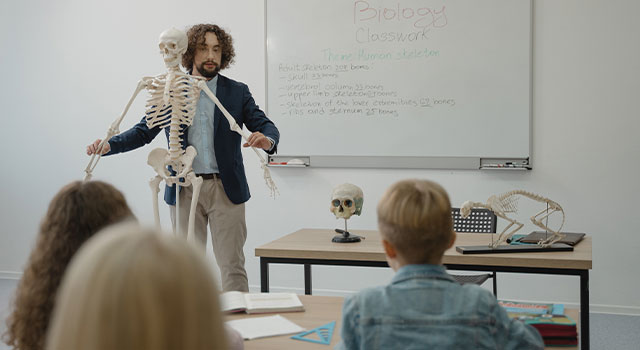 Your child aced their school’s vision screening test with 20/20 eyesight. That means perfect vision, right?
Your child aced their school’s vision screening test with 20/20 eyesight. That means perfect vision, right?
Actually, no. 20/20 simply means that your child can clearly see things that are 20 feet away. While that’s good news, clear eyesight doesn’t mean a student has strong visual skills.
There are 17 crucial visual skills that can impact your child’s success in school and on the sports field. Fortunately, most children are able to improve their visual skills with vision therapy.
What Are Visual Skills?
A healthy visual system relies not only on healthy vision, but on the eyes’ ability to move correctly, send the correct information to the brain, and the brain’s ability to interpret this information. If any one of these visual skills is sub-par, it can impact a child’s reading, writing and learning. This, in turn, can harm their motivation and self-confidence.
The visual skills needed to succeed in school (and life) include:
- Eye movement - the ability to accurately control the eye’s movements
- Eye teaming – the ability of both eyes to work together
- Focusing - the ability to maintain clear vision at all distances
- Peripheral vision – seeing objects at the sides of our vision
- Saccades – the ability for vision to jump between focal points
When 20/20 Vision Doesn’t Measure Up
When a child scores 20/20 on a simple vision test, problems with visual skills often go unnoticed because basic screenings rarely assess beyond eyesight. It’s no wonder that 1 out of 4 schoolchildren has an undiagnosed vision problem! That's a lot of children struggling unnecessarily, and well into adulthood.
Only a functional eye exam performed by an eye doctor can detect subpar visual skills.
Signs Your Child Has a Visual Problem
Schedule a functional eye exam if your child:
- Has learning difficulties
- Reads below grade level
- Exhibits behavioral problems
- Has difficulty paying attention
- Frequently rubs their eyes or blinks frequently
- Squints or covers one eye when reading
- Has poor hand-eye coordination
How Do You Improve Visual Skills in Children?
If your child is diagnosed with any visual skills deficits, their eye doctor may recommend vision therapy. This form of therapy involves the use of specialized eye exercises, prisms, therapeutic lenses and even fun computer-based games that recalibrate how the brain and eyes work together. Vision therapy involves a customized program to meet the individual needs of each child. The therapy is performed in-office and at home between office sessions.
Vision therapy is ideal for kids because their brains are still developing and have greater neuroplasticity (meaning, their brains are more adaptable to change through the strengthening of neural connections).
While the vision therapy program can range from a few weeks to several months, the results last a lifetime.
If your child is struggling to keep up in school or when playing sports, don't delay and schedule an appointment with Dr. Brennan Nelson at Village Eye Centre.
Our practice serves patients from Edmonton, Sherwood Park, St. Albert, and Fort Saskatchewan, Alberta and surrounding communities.
Q: What is the success rate of vision therapy?
- A: Vision therapy is a proven method to boost deficient visual skills and treat the visual system. In a multi-center National Eye Institute-funded study, 75% of patients with convergence insufficiency (problems with eye teaming), experienced normal vision or significantly improved symptoms following office-based vision therapy.
Q: Can vision therapy treat strabismus?
- A: Yes. Vision therapy is the most effective and non-invasive treatment for strabismus— when the eyes don't fixate or focus on the same place or visual target simultaneously. Eye exercises that train the brain and the eyes to work together can correct the eye turn and may even result in vision improvements, such as 3D vision and binocular depth perception.
References
- https://www.optometrists.org/.../the-myth-of-20-20/
- https://www.childrenshospital.org/treatments/vision-therapy
